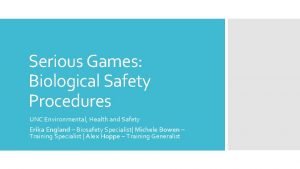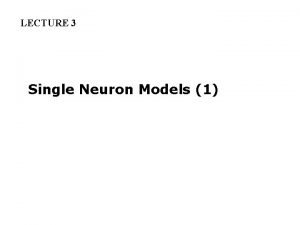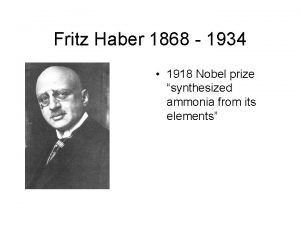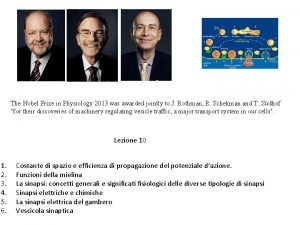Lauren Fordham awarded the Davida Fortinsky prize for










































- Slides: 42

Lauren Fordham awarded the Davida Fortinsky prize for Outstanding Dementia Studies Student.


Quality Dementia Care: It Costs to have a Experience Nothing Rich Outcomes of a case study

SD = P + B + H + NI + SP SD = clinical presentation of dementia P = personality B = Biography / life history H = health NI = neurological impairment SP = social psychology

Problem Explanation Treatment Falls risk Pain in feet Fatigue Risk of absconding Wandering Part of the dementia Sedative medication


Problem Explanation Treatment Falls risk Pain in feet Fatigue Risk of absconding Wandering Part of the dementia Separation anxiety Reassure that Sedative daughtermedication is coming to visit after lunch

Problem Explanation Treatment Falls risk Pain in feet Fatigue Risk of absconding Wandering Part Too ofhot the dementia Open window Sedative medication

• Challenging behaviour Adaptive behaviour Bryden 2005; Brooker 2007

Conclusions q. No labelling q. Holistic assessment q“Adaptive behaviour”

References • • • Brooker, D. (2007) Person-Centred Dementia Care. Making Services Better Bradford Dementia Group Good Practice Guide. London: Jessica Kingsley Publishers Bryden, C. (2005) Dancing with Dementia London: Jessica Kingsley Publishers Cohen-Mansfield, J. (2009) The Language of Behaviour. In: Downs, M. & Bowers, B. eds. Excellence in Dementia Care. Research into Practice. Buckingham: Open University Press pp 187 -211. Everett, T. , Donaghy, M & Feaver, S. (eds) (2003) Interventions for Mental Health. An evidence-based approach for physiotherapists and Occupational Therapists. London: Butterworth Heineman. Hope, T. , Keene, J. , Fairburn, C. , Mc. Shane, R. & Jacoby, R. (1997). Behaviour changes in dementia: Are there behavioural syndromes? International Journal of Geriatric Psychiatry 12(11) pp 1074 -1078 Lai. K. Y. , & Arthur, D. G. (2003) Wandering Behaviour in People with Dementia. Journal of Advanced Nursing 44(2) pp 173 -182

References continued • • • Lawton, M. P. 2001. The physical environment of the person with Alzheimer’s Disease. Aging and Mental Health. 5(supplement 1) pp. S 56 -S 64 Marshall, M. & Allan, K. eds. (2006) Dementia: Walking Not Wandering. Fresh approaches to understanding practice London: Hawker Publications Perrin. T. , May. , H. & Anderson, E. (2008) Wellbeing and Dementia. Edinburgh: Churchill Lvingstone Rewston, C. & Moniz-Cook, E. (2009) Understanding and alleviating emotional distress. In: Downs, M. & Bowers, B. eds. Excellence in Dementia Care. Research into Practice. Buckingham: Open University Press. Surr, C. , Bruce, E. & Tibbs, M. (2003) Feeding the Spirirts In: Marshall, M. ed. Food, Gorious Food. Perspective on Food and Dementia London: Hawker Publications

Visualperceptual Difficulties By Lauren Fordham MCSP

“We do not see the world the same”

Visuoperceptual Difficulties in Dementia • Vision • Visual Mistakes (The Alzheimer’s Society 2010)

Visuoperceptual Difficulties in Dementia • Damage to visual pathway Ø Colour perception Ø Depth and motion perception Ø Object and facial recognition Ø Figure-background contrast (The Alzheimer’s Society 2010)


Theory into Practice… Reflection



Pain This Photo by Unknown Author is licensed under CC BY

How many people with dementia experience pain? Why? A. 22% to 45% B. 47% to 66% C. 15% to 22%

How many nurses are always assessing for pain in people with dementia on a hip fracture ward? A. 95% B. 88% C. 69%

Pain results in ………. For people with dementia Red uced Grea ter fa qua lls ris Red lity o u k f life ced p e life e l s s r atis o y t fac i l D i b a Po e s i tion pre More d ssio n Impaired movement ability

Most common causes of pain • • • Osteoarthritis Fracture central post stroke pain neuropathies Cancer vascular disease

National guidelines specify that all older people are assessed for pain (Department of Health, 2001; BPS and BGS, 2007)

How? • Self report • Behavioural signs of pain

Case Study

• The British Pain Society and British Geriatrics Society (2007) have produced guidance. They do not recommend a particular assessment tool but stipulate that the chosen tool should meet the following criteria: • • · · · · Observation of facial expressions Observation for guarding body movements Observing verbalisations Observing changes in interpersonal interactions Observing for changes in mental status Asking the person if they are in pain Observations are during movement Appropriate to the environment

Results



Recommendations

• • • • • • • • Discomfort Behaviour Scale Elderly Pain Caring Assessment 2 (EPCA-2) Facial Action Coding System Pain Behaviour Checklist (PBC) The Nonverbal Pain Assessment Tool Pain Assessment Checklist for Seniors with Limited Ability to Communicate (PACSLAC) Pain Assessment in Advanced Dementia (PAINAD) Disability Distress Assessment Tool (Dis. DAT) Discomfort Scale for Patients with Dementia of the Alzheimer's Type (DS-DAT) DOLOPLUS-2 Mobilization Observation Behaviour Intensity Dementia Pain Scale (MOBID) Mobilization Observation Behaviour Intensity Dementia Pain Scale 2 (MOBID-2) Checklist of Nonverbal Pain Indicators (CNPI) Certified Nursing Assistant Pain Assessment Tool (CPAT) The Abbey Pain Scale (The Abbey) The Non-Communicative Patient's Pain Assessment Instrument (NOPPAIN) Pain Assessment for the Dementing Elderly (PADE) The Assessment of Discomfort in Dementia (ADD) Protocol The Hospice Approach Discomfort Scale Davies et al. (2004) pain assessment tool The Aged Care Pain Chart The Behaviour Checklist The Facial Grimace Scale The Pain Behaviours for Osteoarthritis Instrument for Cognitively Impaired Elders (PBOICIE) The Face, Legs, Activity, Cry and Consolability Pain Assessment Tool (FLACC) Pain Assessment in the Communicatively Impaired (PACI) The Pain Assessment Tool in Confused Older Adults (PATCOA) Amy’s Guide The Simons and Malabar Pain Scale




References Carson, S. (2006) Organisational Change. In: Hamer S. & Collinson G. eds Achieving Evidence. Based Practice. A Handbook for Practitioners. 2 nd Edition. London : Bailliere Tindall pp 175 -194 Centre for Reviews and Dissemination (2009) CRD's Guidance for Undertaking Reviews in Healthcare. York: University of York. Department of Health (2007) The National Service Framework for Older Pople. London: Department of Health (2007). Best Research for Best Health. A New National Health Research Strategy. London: Department of Health. Taylor, B. (2006) Personal Change. In: Hamer S. & Collinson G. eds Achieving Evidence-Based Practice. A Handbook for Practitioners. 2 nd Edition. London : Bailliere Tindall pp 155 -174 The Chartered Society of Physiotherapy (2005) Service Standards of Physiotherapy Practice. London: The Chartered Society of Physiotherapy pp 11 -12 The Chartered Society of Physiotherapy (2004) Research and Clinical Effectiveness Strategy. London: The Chartered Society of Physiotherapy Colyer, H. (1999) Evidence-based Parctice. A Philosophical and Political Analysis: Some Matters for Consideration by Professional Practitioners. Journal of Advanced Nursing 29(1) pp 188 -193 Drake, R. E. , Goldman, H. H. , Leff, S. , Lehman, A. F. , Dixon, L. Mueser, K. T. & Torrey, W. C. (2001)Implementing Evidence-Based Practices in Routine Mental Health Service Settings. Psychiatric Services 52(2) pp. 179 -182 Franks, V. (2004) Evidence-based Uncertainty in Mental Health Nursing. Journal of Psychiatric and Mental Health Nursing 11(1) pp 99 -105 Sackett, D. L. , Rosenberg, W. M. C. , Gray, J. A. M. , Haynes, R. B. & Richardson, W. S. (1996) Evidence Based Medicine: What it is and What is isn't. British Medical Journal. 312 pp 71 -72 Seedhouse, D. (2005) Value-Based Decision-Making for the Caring Professionals. West Sussex: John Wiley & Sons Ltd.

Centre for Reviews and Dissemination (2009) CRD’s Guidance for Undertaking Reviews in Health Care. York: University of York Colyer, H. & Kamath, P. (1999). Evidence-based practice: A philosophical and political analysis: some matters for consideration by professional practitioners. Journal of Advanced Nursing. 29(1) pp 188 -193 Grimmer, K. , Bialocerkowski, A. , Kumar, S. & Milanese. (2004). Implementing evidence in clinical practice: the "therapies" dilemna. Physiotherapy. 90(4) pp 189 -194 Ilott, I. & White, E. (2001) 2001 College of Occupation Therapist's Research and Development Strategic Vision and Action Plan. British Journal of Occupational Therapy 64(6) Mann, T. (1996) Clinical Guidelines: Using Clinical Guidelines to Improve Patient Care Within the NHS. London: Department of Health NHS Executive. Rosenberg, W. , & Donald, A. (1995). Evidence based medicine: an approach to clinical problem solving. British Medical Journal 310 pp 1122 -1126 Sackett, D. L. , Rosenberg, W. M. C. , Gray, J. A. M. , Haynes, R. B. & Richardson, W. S. (1996). Evidence Based Medicine: What it is and What it isn't. British Medical Journal 312 pp 71 -72 Sackett, D. L. & Wennberg, J. E. (1997) Choosing the best research design for each question. British Medical Journal 315 pp 1636 -1637 Taylor, B. (2006) Personal Change In: Hamer S. & Collinson G. eds. Achieving Evidence-Based Practice. A Handbook for Practitioners. 2 nd Edition. Published in London by Bailliere Tindall pp 155 -174 The Chartered Society of Physiotherapy (1995). The Chartered Society of Physiotherapy Research Strategy. London: The Chartered Society of Physiotherapy pp 11 -12 The Chartered Society of Physiotherapy (2005). Service Standards of Physiotherapy Parctice. London: The Chartered Society of Physiotherapy pp 11 -12 The Royal College of Nursing (1996) The Royal College of Nursing clinical effectiveness initiative: a strategic framework. London: Royal College of Nursing.

Abbey, J. (2007) Putting pain scales to the test. Australian Nursing Journal 14(7) p 43 Cervo, F. A. , Raggi, R. P. , Bright-Long, L. E. , Wright, W. K. , Rows, G. , Torres, A. E. , Levy, R, B. and Komaroff, E. (2007) Use of the certified nursing assistant pain assessment tool (CPAT) in nursing home residents with dementia. American Journal of Alzheimer’s Disease and Other Dementias 22(2) pp 112 -9. Cervo, F. A. , Bruckenthal, P. , Chen, J. J. , Bright-Long, L. E. , Fields, S. , Zhang, G. and Strongwater, I. (2009) Pain assessment in nursing home residents with dementia: psychometric properties and clinical utility of the CNA Pain Assessment Tool (CPAT). American Journal of Alzheimer’s Disease and other Dementias 10(7) pp 505 -10. Chen, Y. H. , Lin, L. C. and Watson, R. (2010) Validating nurses’ and nursing assistants’ report of assessing pain in older people with dementia. Journal of Clinical Nursing 19(1 -2) pp 42 -52 Cohen-Mansfield, J. (2006) Pain Assessment in Non-communicative Elderly Persons - PAINE. The Clinical Journal of Pain 22(6) pp 569 -575 Fuchs-Lacelle, S. and Hadjistavropoulos, T. (2005) A checklist for pain assessment in LTC – PACSLAC: Pain Assessment Checklist for Seniors with Limited Ability to Communicate. Canadian Nursing Home 16(4) pp 4 -7 Herr, K. , Coyne, P. J. , Key, T. , Manworren, R. , Mc. Caffrey, M. , Merkel, S. , Pelosi-kelly, J. and Wild, L. (2006) Pain assessment in the nonverbal patient: Position statement with clinical practice recommendations. Pain Management Nursing 7(2) pp 44 -52 Holen, J. C. , Saltvedt, I. , Fayers, P. M. , Hjermstad, M. J. , Loge, J. H. and Kaasa, S. (2007) Doloplus-2, a valid tool for behavioural pain assessment? . BMC Geriatrics 19(7) p 29 Horgas, A. L. , Nichols, A. L. , Schapson, C. A. and Vietes, K. (2007) Assessing pain in persons with dementia: Relationships among the non-communicative patient’s pain assessment instrument, self-report, and behavioural observations. Pain Management Nursing 8(2) pp 77 -85 Husebo, B. S. , Strand, L. I. , Moe-Nilssen, R. , Husebo, S. B. , Snow, A. L. and Ljunggren, A. E. (2007) Mobilization. Observation-Behaviour-Intensity-Dementia Pain Scale (MOBID): Development and validation of a nurse-administered pain assessment tool for use in dementia. Journal of Pain and Symptom Management 34(1)pp 67 -80 Husebo, B. S. , Strand, L. I. Moe-Nilssen, R. , Husebo, S. B. and Ljunggren, A. E. (2009). Pain behaviour and pain intensity in older persons with severe dementia: Reliability of the MOBID pain scale by video uptake. Scandinavian Journal of Caring Science 23(1) pp 180 -189

Husebo, B. S. , Strand, L. I. Moe-Nilssen, R. , Husebo, S. B. and Ljunggren, A. E. (2010). Pain in Older Persons with Severe Dementia. Psychometric properties of the Mobilization-Observation-Behaviour. Intensity-Dementia (MOBID-2) pain scale in a clinical setting. Scandinavian Journal of Caring Science 24(2) pp 380 -391 Jordan, A. , Hughes, J. , Pakresi, M. , Hepburn, S. and O’Brien, J. T. (2011) The utility of PAINAD in assessing pain in a UK population with severe dementia. International Journal of Geriatric Psychiatry 26(2) pp 118 -126 Liu, J. Y. , Briggs, M. and Closs, S. J. (2010) The psychometric qualities of four observational pain tools (OPTs) for the assessment of pain in elderly people with osteoarthritic pain. Journal of Pain and Symptom Management 40(4) pp 582 -598 Mahoney, A. E. and Peters, L. (2008) The Mahoney Pain Scale: Examining pain and agitation in advanced dementia. American Journal of Alzheimer’s Disease and other Dementias 23(3)pp 250 -261 Pautex, S. , Herrmann, F. R. , Michon, A. , Giannakopoulos, P. & Gold, G. (2007) Psychometric Properties of the Doloplus-2 Observational Pain Assessment Scale and Comparison to Self-assessment in Hospitalised Elderly. Clinical Journal of Pain 23(9) pp 774 -779 The British Pain Society and British Geriatrics Society (2007) Guidance on: The assessment of pain in older people. London: The Royal College of Physicians Torvik, K. , Kaasa, S. , Oyvind, K. , Saltvedt, I. , Holen, J. C. , Fayers, P. and Rustoen, T. (2010) Validation of Doloplus-2 among nonverbal nursing home patients – an evaluation of Doloplus-2 in a clinical setting. BMC Geriatrics 10(9)pp 9 Van Iersel, T. , Timmerman, D. and Mullie, A. (2006) Introduction of a pain scale for palliative care patients with cognitive impairment. International Journal of Palliative Nursing 12(2) pp 54 -59 Van Nispen tot Pannerden, M S. C. , Candel, M. J. J. M. , Zwakhalen, S. M. G. , Hamers, . J. P. H. , Curfs, L. M. G. and Berger, M. P. F. (2009) An item response theory-based assessment of The Pain Assessment Checklist for Seniors with Limited Ability to Communicate (PACSLAC). The Journal of Pain 10(8) pp 844 -853 Zwakhalen, S. M. G. , Hamers, J. P. H. , Abu-Saad, H. H. and Berger, M. P. F. (2006) Pain in elderly people with severe dementia: A systematic review of behavioural pain assessment tools. BMC Geriatrics 6, 3. Zwakhalen, S. M. , Hamers, J. P. and Berger, M. P. (2006) The psychometric quality and clinical usefulness of three pain assessment tools for elderly people with dementia. Pain 126(1 -3) PP 210 -220 Zwakhalen, S. M. G. , Hamers, J. and Berger, M. P. F. (2007) Improving the clinical usefulness of a behavioural pain scale for older people with dementia. Journal of Advanced Nursing 58(5) pp 493 -502

 Michelangelo
Michelangelo Fordham hall unc
Fordham hall unc Beta alpha psi fordham
Beta alpha psi fordham Xiaolan zhang fordham
Xiaolan zhang fordham Gary weiss fordham
Gary weiss fordham Fordham daur
Fordham daur Cronin cafe fordham
Cronin cafe fordham Hereby awarded
Hereby awarded Etco e learning
Etco e learning Techyons
Techyons Deming prize history
Deming prize history Example for advice
Example for advice Nobel prize 1963
Nobel prize 1963 Modelo deming prize
Modelo deming prize Katsushi arisaka nobel prize
Katsushi arisaka nobel prize Nitrogenase enzyme complex
Nitrogenase enzyme complex Nobel peace prize 1962
Nobel peace prize 1962 Nobel prize blood typing game
Nobel prize blood typing game Nobel peace prize winners wiki
Nobel peace prize winners wiki Up student plagiarizes prize-winning photos
Up student plagiarizes prize-winning photos Millennium prize problems
Millennium prize problems Ansari prize
Ansari prize Drauzio varella nobel prize
Drauzio varella nobel prize Who won the nobel prize in chemistry
Who won the nobel prize in chemistry Emani kumar
Emani kumar First madan puraskar winner
First madan puraskar winner Echa awards
Echa awards Millennium prize problems
Millennium prize problems General motors increases its production throughput
General motors increases its production throughput Eyes on the prize ain't scared of your jails summary
Eyes on the prize ain't scared of your jails summary Yidarton.net/to get your prize
Yidarton.net/to get your prize Jean baptiste perrin nobel prize
Jean baptiste perrin nobel prize Nobel prize 1963
Nobel prize 1963 Heritage health prize
Heritage health prize Loebner prize
Loebner prize Numerical adjectives
Numerical adjectives Nobel prize 1963
Nobel prize 1963 Regrettably these days lots of people don’t have jobs.
Regrettably these days lots of people don’t have jobs. How to play bunco with a ghost
How to play bunco with a ghost Pcr nobel prize
Pcr nobel prize Netflix prize
Netflix prize Cfa research challenge report template
Cfa research challenge report template E donnall thomas nobel prize
E donnall thomas nobel prize

































































